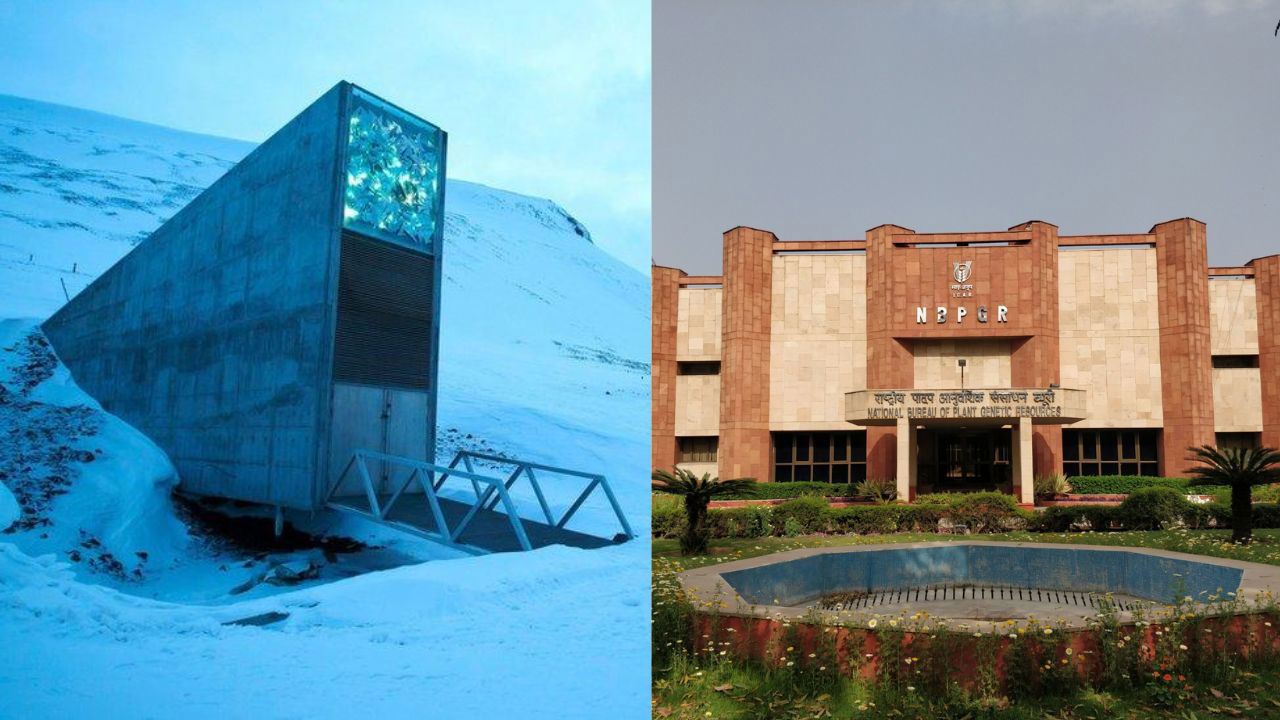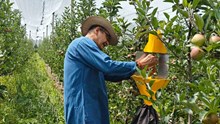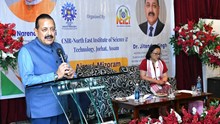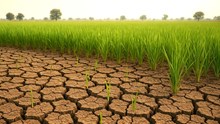
Genetic diversity in plants is one of humanity’s most valuable yet increasingly endangered assets. For thousands of years, the rich genetic variability of crops and their wild relatives has been the backbone of global agriculture, ensuring food security and resilience against environmental changes. Unfortunately, this irreplaceable resource is rapidly diminishing, posing an existential threat to future food production, climate adaptation, and biodiversity conservation.
In an era marked by climate change, land degradation, and habitat loss, preserving genetic diversity is not just an agricultural necessity—it is a survival strategy. The concerning decline of plant genetic resources compromises the ability to develop resilient crop varieties capable of withstanding extreme weather conditions, pests, and diseases. Without proactive conservation efforts, the world's capacity to adapt to evolving agricultural and environmental challenges will be severely constrained.

Kancha Gachibowli: Urbanization's Impact on Forest Genetic Resources
-
One of the more striking examples of urban development threatening critical biodiversity is the ongoing situation in Hyderabad, India, regarding the Kancha Gachibowli Forest Area. Just a few days ago, news broke that this ecologically significant 400-acre forest—which houses a rich variety of wildlife, including over 237 bird species, spotted deer, and various snake species—faces an immediate threat from plans to auction the land for commercial development.
-
The forest area also includes key bodies of water like Peacock Lake and Buffalo Lake, which serve as essential habitats for migratory birds and other wildlife. The proposed auction, which could result in significant deforestation, has sparked an outcry from environmentalists, residents, and academic institutions like the University of Hyderabad, who argue that such development would further exacerbate the already alarming loss of genetic diversity in both forest and plant species.
-
This case highlights the delicate balance between urban expansion and conservation efforts. As the world continues to face challenges like deforestation and climate change, the protection of genetic diversity in forests becomes even more crucial for maintaining ecological balance, climate regulation, and food security.
-
Furthermore, this ongoing local conservation initiative in Kancha Gachibowli could serve as a model for broader policy efforts globally. By emphasizing the value of safeguarding ecologically significant areas, the case reinforces the argument that local actions can have global impacts. Successful local conservation campaigns—like the one to protect this forest—could encourage other regions and countries to adopt similar policies aimed at preserving biodiversity and ensuring climate resilience. The economic and social benefits these areas provide to local communities, such as eco-tourism and improved climate adaptation, also serve to highlight the broader relevance of forest conservation in strengthening both local and global ecosystems.
-
The loss of such forests exacerbates genetic erosion, particularly for species that rely on diverse, undisturbed ecosystems for their survival. Moreover, areas like Kancha Gachibowli are important for local communities, providing not only biodiversity but also contributing to essential ecosystem services like carbon sequestration and water purification—key components of climate resilience and food security.
Induced Mutagenesis for Genetic Enhancement
One of the most effective techniques for safeguarding genetic diversity and improving crop resilience is 'Induced Mutagenesis'—a century-old process where seeds are exposed to radiation to generate beneficial genetic variations. This method has played a pivotal role in breeding crop varieties with improved traits, such as higher yields, enhanced nutritional value, and greater resistance to pests and diseases.
Unlike genetically modified organisms (GMOs), induced mutagenesis does not involve the insertion of foreign genes, making it a widely accepted and safe approach to crop improvement. The development of superior plant varieties through this technique has significantly contributed to food security and economic stability in various regions worldwide. However, as plant genetic diversity continues to decline, the urgency to utilize and conserve these genetic advancements has never been greater.
Alarming Reality: A Call to Action
Recent reports from the United Nations’ Food and Agriculture Organization (FAO) paint a stark picture of the current state of plant and forest genetic diversity. Two landmark studies—the Third Report on the State of the World’s Plant Genetic Resources for Food and Agriculture and the Second Report on the State of the World’s Forest Genetic Resources—highlight distressing trends:
-
Over 40% of plant species studied have vanished from their native habitats.
-
Nearly one-third of tree species are facing significant threats, with deforestation and climate change accelerating genetic erosion.
-
Despite conservation efforts, genetic diversity in both cultivated and wild plant species is declining at an alarming rate.
These findings underscore the critical need for urgent and sustained action. The world is at a crossroads: we can either invest in safeguarding genetic diversity or face irreversible consequences, including food insecurity, economic instability, and environmental degradation.
Economic Benefits of Genetic Conservation
The conservation of plant genetic diversity is not only crucial for food security but also has significant economic implications. Maintaining a broad genetic base in crops allows for the continuous development of improved varieties that are more resilient to pests, diseases, and climate extremes. Genetic diversity enables higher yields, reducing the dependency on expensive chemical fertilizers and pesticides, ultimately lowering production costs for farmers.
For example, hybrid rice varieties developed through genetic conservation efforts have significantly improved productivity in countries like China, India, and the Philippines, boosting rural incomes and national economies.
Additionally, the global seed market is a multibillion-dollar industry, reflecting the growing importance of seed security. According to industry reports, the global seed market expanded from USD 36 billion in 2007 to over USD 50 billion in 2020, driven by increasing demand for hybrid and climate-resilient seeds.
This growth highlights how investing in genetic conservation directly supports agricultural innovation, enhances farmer livelihoods, and ensures a stable food supply. Countries that prioritize genetic resource conservation and seed development gain a competitive edge in the global agricultural trade, fostering economic growth and sustainability.
Plant Genetic Resources: Pillar of Agricultural Resilience
Plant genetic resources—comprising domesticated species and their wild relatives—form the foundation of sustainable agriculture. Their importance extends beyond food production, influencing medicine, fiber, biofuels, and cultural traditions. The FAO’s Third Report highlights some positive developments, particularly in the preservation of genetic materials within germplasm collections. Since 2009, there has been an 8% increase in the conservation of plant genetic resources, ensuring that these materials are available for future breeding programs.
Additionally, the global seed market has witnessed significant growth, expanding from USD 36 billion in 2007 to over USD 57.6 billion in 2023, underscoring the increasing importance of seed security. In India, the seed industry reached USD 7.8 billion in 2024, and projections from the IMARC Group suggest it will grow to USD 19.0 billion by 2033, with a compound annual growth rate (CAGR) of 10.5% from 2025 to 2033. Despite these promising trends, however, the ongoing loss of genetic diversity remains a critical challenge that these advancements have not yet been able to fully address.
To ensure long-term sustainability, stronger policy frameworks, increased investments, and enhanced international collaboration are essential. The successful implementation of the Second Global Plan of Action for Plant Genetic Resources, alongside commitments to the Sustainable Development Goals (SDGs) and the Kunming-Montreal Global Biodiversity Framework, will be key in reversing current trends.

Case Studies of Successful Genetic Conservation Efforts
Svalbard Global Seed Vault: Safeguarding the World's Crop Diversity
-
Nestled deep within the Arctic permafrost, the Svalbard Global Seed Vault in Norway is often referred to as the "Doomsday Vault." Established in 2008, this facility serves as the world’s largest backup storage for crop diversity, housing over 1.2 million seed samples from nearly every country.
-
By providing a secure, long-term storage solution, the vault ensures that future generations have access to vital plant genetic resources, even in the event of natural disasters, climate change, or geopolitical crises. The significance of Svalbard became evident during the Syrian civil war when researchers from the International Center for Agricultural Research in Dry Areas (ICARDA) successfully withdrew wheat, barley, and lentil seeds to replenish lost genetic material in their war-torn research centers.
India’s National Bureau of Plant Genetic Resources (NBPGR): Preserving Indigenous Crop Varieties
-
India, a country rich in agricultural heritage, has taken significant steps to conserve plant genetic diversity through the National Bureau of Plant Genetic Resources (NBPGR). Operating under the Indian Council of Agricultural Research (ICAR), the NBPGR conserves over 4,50,000 plant accessions, making it one of the largest repositories in the world.
-
The organization focuses on collecting, characterizing, and preserving native crop varieties, including landraces and wild relatives. Special attention is given to traditional crops like millets, pulses, and medicinal plants that are crucial for India's food security. By safeguarding these genetic resources, NBPGR plays a critical role in developing climate-resilient and high-yield crop varieties that benefit millions of farmers.
CIMMYT: Advancing Wheat and Maize Genetic Improvement
The International Maize and Wheat Improvement Center (CIMMYT), headquartered in Mexico, has been at the forefront of wheat and maize genetic enhancement for decades. CIMMYT’s research has led to the development of high-yield, disease-resistant crop varieties that have significantly boosted global food production.
The organization's work in breeding drought-tolerant maize varieties has been particularly impactful in sub-Saharan Africa, where smallholder farmers struggle with erratic rainfall. Additionally, CIMMYT played a key role in the Green Revolution, helping to introduce improved wheat varieties that dramatically increased grain production in India and Mexico. By continuously innovating and distributing superior seed varieties, CIMMYT contributes to global food security and economic stability.

Forest Genetic Resources: Frontline of Climate Adaptation
While crop genetic diversity is crucial, the conservation of forest genetic resources is equally imperative. The FAO’s Second Report on the State of the World’s Forest Genetic Resources highlights that 30% of tree species worldwide are under threat, particularly in tropical and subtropical regions. Deforestation, climate change, pests, and diseases are eroding the genetic diversity of forests, which are vital for carbon sequestration, climate regulation, and ecological balance.
Despite improvements in national inventories and taxonomic assessments, most forest species remain inadequately studied, making effective management strategies challenging. Of the 58,000 tree species worldwide, only about 1,800 have been genetically characterized, a shockingly small fraction given their ecological importance.
Compounding these challenges, seed shortages in national tree-seed programs hinder afforestation and reforestation efforts. With the global target of increasing forest cover by 3% by 2030, urgent action is required to ensure sustainable seed supply chains, improve conservation programs, and promote climate-resilient afforestation projects.
Charting a Sustainable Future: Way Forward
Despite these challenges, hope remains. The FAO’s reports underscore the need for a global commitment to genetic resource conservation. Governments, research institutions, and farming communities must work together to implement policies that prioritize genetic diversity preservation.
Key actions include:
-
Strengthening global seed banks and genebanks to safeguard critical plant genetic resources.
-
Promoting agroecological and traditional farming practices that preserve genetic diversity on-farm.
-
Enhancing research and innovation in plant breeding to develop climate-resilient crop varieties.
-
Scaling up afforestation and reforestation efforts with a focus on preserving forest genetic diversity.
-
Investing in education and awareness programs to emphasize the importance of genetic conservation.
Policy & Legal Frameworks for Genetic Conservation
International cooperation and strong policy frameworks are essential for the effective conservation and sustainable use of plant genetic resources. The International Treaty on Plant Genetic Resources for Food and Agriculture (ITPGRFA), also known as the Seed Treaty, was adopted in 2001 to ensure fair and equitable access to plant genetic resources. This treaty facilitates the sharing of crop diversity across borders and supports farmers and breeders in developing improved crop varieties. It also promotes benefit-sharing mechanisms, ensuring that the communities preserving genetic resources receive due recognition and support.
Similarly, the Nagoya Protocol, a key agreement under the Convention on Biological Diversity (CBD), establishes a legal framework for accessing genetic resources and sharing benefits derived from their use. It ensures that countries and indigenous communities maintaining biodiversity receive fair compensation when their genetic materials are used in research or commercial applications.
Despite these global agreements, policy gaps still hinder genetic conservation efforts in many countries. Inadequate funding, weak enforcement mechanisms, and lack of coordination between government agencies often prevent effective implementation of conservation programs. Strengthening national policies, increasing investment in research, and fostering international collaboration are essential to safeguarding plant genetic resources for future generations.
A Collective Responsibility for a Resilient Future
Preserving genetic diversity in plants and forests is not just a scientific concern—it is a defining challenge of our time. The erosion of genetic resources threatens the very foundation of food security, biodiversity, and climate resilience. Every lost species, every vanished crop variety, weakens our ability to adapt to an uncertain future.
The urgency to act has never been greater. We stand at a critical juncture where decisive, collective action can determine the fate of our agricultural and ecological systems. Governments, scientists, farmers, and global institutions must unite to safeguard genetic diversity through conservation, innovation, and sustainable practices.
The cost of inaction is immense—rising food insecurity, economic instability, and environmental collapse. But the opportunity before us is equally powerful: by protecting and enhancing plant genetic resources today, we secure a resilient, nourished, and sustainable world for generations to come. The time to invest in our planet’s genetic future is now—before it is too late.
















